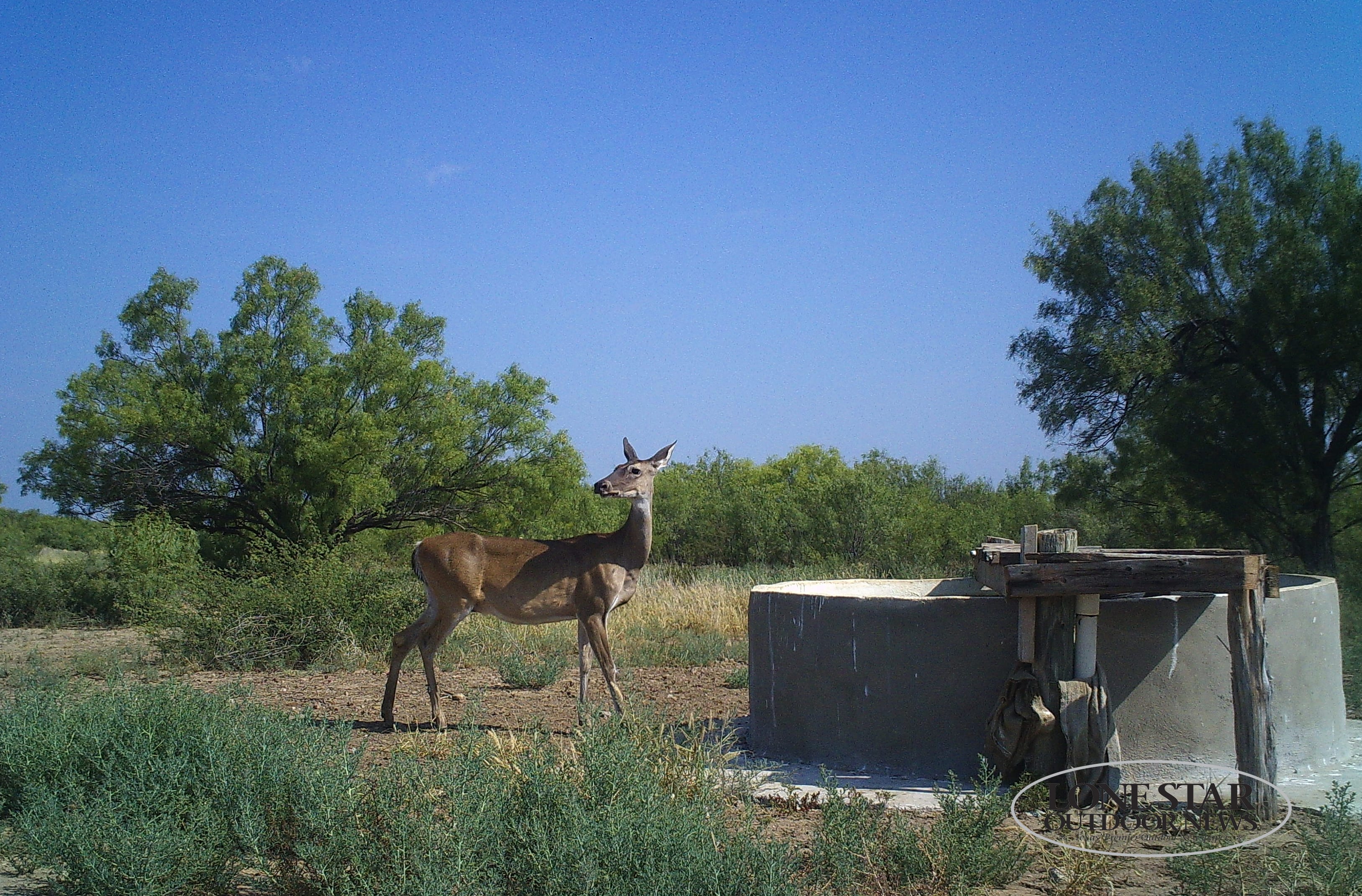Written by Craig Nyhus, Lone Star Outdoor News
The heat of the summer in much of Texas, especially South Texas, coincides with some of the most physically demanding conditions for white-tailed deer, including fawning and lactating for does, antler growth for bucks and building of reserves before the fall.
How do the deer deal with it?
“There are lots of studies in the north about how deer deal with the cold,” said Timothy Fulbright with the Caesar Kleberg Wildlife Research Institute, “but not much in the south regarding how they deal with heat — it’s just as stressful.”
Fulbright said studies in northern states show any temperature above 68-72 degrees causes deer to become less active, although these figures may not be the same with South Texas deer.
The deer are unable to deal with heat in ways many other animals do, Fulbright said.
“They don’t have sweat glands,” he said. “They can pant, but that involves a loss of water and South Texas summers are often short on water.”
So how do the deer cope? The primary way is through behavior.
“We saw two main ways they cope,” Fulbright said. “One, through decreased movement and the other by picking cooler spots on the landscape. We studied bucks wearing collars, they just don’t move in the heat of the day.”
Observations of the deer also included orienting themselves to the prevailing winds for cooling effects and choosing the tallest stands of trees or brush that offer the most shade.
Where supplemental feed is available, deer are even less active and move more at night.
“They know where the feeder is and the feed is easier to digest,” he said. “However, the feed includes grain which does create more body heat when digested.”
So what is the solution for landowners, ranch managers and hunters when managing deer in an oven?
Charles DeYoung offered some suggestions at the Deer Associates Meeting, held in San Antonio and hosted by CKWRI on March 5.
“Manage the vegetation,” he said. “Leave plenty of the tallest brush as shade to reduce the heat load and leave stands of brush, as fawns prefer bedsites near clumps of brush .”
When spraying, DeYoung discouraged aerial spraying of mesquites and other brush over large areas.
“Don’t spray big blocks,” he said. “Aerial spraying can destroy a lot of tall brush that a roller chopper can’t.”
DeYoung said managing the drinking water for the deer is equally as important when dealing with scorching summers.
“Heat causes a decrease in appetite and panting causes a loss of water for the deer,” he said, citing a study where food was readily available for the deer but water was only available in limited supply and was located more than 100 yards away from the feed, simulating a poorly watered ranch.
“The bucks drank 27 percent less water and ate 21 percent less food than the deer with easy access to both food and water, and the does drank 21.8 percent less water and ate 9.6 percent less food.” DeYoung said. “Water has a direct effect on food consumption — its important to have well-distributed drinking water.”



2 comments
Great article. Thank for the write up.
Great buck sir. Hat off to you guys, you went and hunted terrian that was unfamiliar to you and still managed to harvest a great buck that is awesome, good for you. I’am from Utah and we have some great hunting terrian here too sir, if you decide to do another hunt outside of the great state of Texas, you should think of hunting in Utah I think you would enjoy it.
Comments are closed.